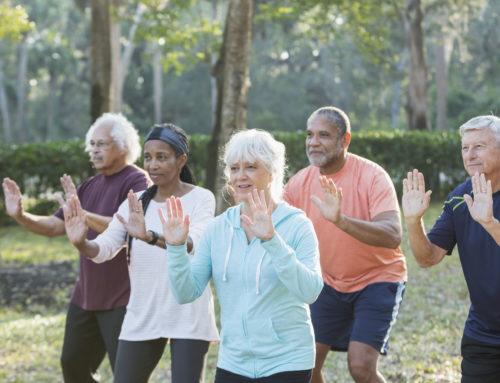This month, I sat down with Laptop Radio, a show out of Stanford University about entrepreneurship and technology.
I had an interesting conversation with the host, Michelle Tsing, about the problems in pain management that Fern Health has set out to solve.
The conversation’s theme was the future of pain management, with a focus on telemedicine. As I’ve shared before, I believe that virtual care was the future before the COVID-19 pandemic, too. In a recent survey from the U.S. Pain Foundation, 89.9% of respondents said they would like to see telehealth continue beyond the pandemic. We discuss in the podcast how digital programs for chronic musculoskeletal pain like Fern allow people in pain to access high-quality care from anywhere, with barriers including travel and copays removed.
I’ve shared a few highlights from our conversation, and you can also listen to the full discussion in the podcast embedded below.
Excerpts have been edited for length and clarity.
Laptop Radio: Tell me a little about musculoskeletal (MSK) pain and why it’s an issue in the U.S.
Travis Bond: It’s about the muscles in your body and the joints – those body parts that bend. There are nearly 20 muscles that involve the movement of the hip. And when you quantify it, Americans spend $380 billion a year on MSK pain. When you think about the $380B and the people who suffer from it, you actually have a bigger count than cancer, heart disease, and diabetes combined.
Laptop Radio: Why are the current pain management solutions not effective?
There are two reasons. The first one seems to be everyone’s natural, native response to pain: stop. Whatever that stimulus is, you avoid it, like taking your hand off that hot stove. But when it comes to your ankles and shoulders and neck, resting and immobility become part of further aggravation.
The other side of the coin is that they rush to the doctor. This actually creates its own set of complex problems, because when you walk into the doctor with a general complaint of, “my back hurts,” there’s not really a lot you can do in a light physical exam. So the next course of action is imaging. The data shows that imaging is actually quite misleading. If you’re over 30 and you get an MRI, chances are they’re going to find some abnormality. The problem is that most of those abnormalities have no clinical manifestation – it’s just part of your body getting older. That misleading indicator plus a complaint of pain leads you into this journey. This is where you can get involved with pain treatments. For example, you might get a really strong pain reliever and go home and rest. So now you’re doing the worst of everything. You’re not really treating the body, you’re sort of masking the pain, and that’s really where we’ve found ourselves.
Laptop Radio: Why would exercise therapy, pain neuroscience education, and health coaching be the best options, as Fern Health describes?
This is part of what’s just fascinating. When you start studying pain, you see that it’s hardwired to so many other things in your body. And so when we think about chronic pain – here’s another long word for you: biopsychosocial. This is the connection between biological, psychological, and socioeconomic factors. Really what happens is, you hurt your back. Maybe you were picking something up at work, or you were getting out of your car in a funny way, what you’ll find is that you really have a biological issue, a torn muscle. So you have a physical muscle that you’ve hurt. But what happens now is if this doesn’t get resolved, that pain becomes chronic, which starts to rewire your brain processes pain. Changes in the pain from chronic pain can be seen in MRI scans. Essentially, chronic injuries can lead to a hard wired hypersensitivity to pain stimulus.. Kind of like a sunburn, your skin becomes hypersensitive to all stimulus.
If your injured area is constantly sending pain signals to your brain, physiological changes in your brain will develop in the same centers in your brain that are giving you the cognitive experience of pain, emotions, motivations, and our rewards system. This is where pain neuroscience education becomes an essential modality for treatment. Basically, you need to learn to reinterpret pain. Think of it as training your brain for pain.
Lastly, and as important as exercise therapy and pain neuroscience is the health coach. Navigating a journey from chronic pain to no or little pain requires some guidance. Our certified health coaches are trained to build a therapeutic alliance with our members. They set and track goals together, encourage program adherence and understanding.
It is important to remember, chronic pain leads to behavioral and neurological changes. Pain can impact your relationships, your performance at your job. Part of getting your hands around pain is recognizing that it’s multi-modal. You can’t just take a pill for it and cure it. So for high blood pressure, maybe there’s just a pill and a change in diet, and that’s the scope. But if you have pain that’s not resolving, then it’s changing the way you’re interacting. So it’s to help people understand what’s going on in your brain so you can get in front of the pain.
Laptop Radio: It sounds like it’s an all digital program. Do you think there’s a need to get in front of a physical person to manage pain?
What we’ve seen in terms of the changing landscape and telemedicine, especially with MSK pain, is that it can become chronic. If it becomes too bad, if the treatment involves PT, or going to doctors, then this becomes an access issue. The question is, what works most of the time? When you have something like resetting a broken bone with a cast, or you have high cholesterol and you use a statin, those can be done on the spot. When you’re talking about pain, it’s a long-term program. The longer a program is, the more challenges you’ll have with adherence. You can spend a few thousand dollars going to a PT just in copays. As we all know with high deductible plans, that’s going to be all on you. If you live next door to a physical therapist, that might work but still might have its limitations in terms of just being open from nine to five.
A digital platform works. It’s about privacy, it’s about access, controlling costs. We know these things can be done digitally, and the nice thing about digital is the consistency. If you’ve ever gone to a massage therapist, I don’t think any of us could say that we’ve had the same massage twice. So there’s this infinite, individual variability with a massage therapist to the massage you get, even if you say “deep tissue.” The same thing exists in physical therapy. These are people who are taking interpretations of their training and they’re applying them in their own individual approach.
If you can reproduce something that’s based on clinical evidence, then the repeatability that you get on a digital platform can arguably be better than some of the speciality clinics you would go to, because of that variability. And then of course digital is frictionless. You can open up your phone at any time and start.
Ready to learn more about Fern Health’s digital musculoskeletal pain program? Get in touch using the form below.






